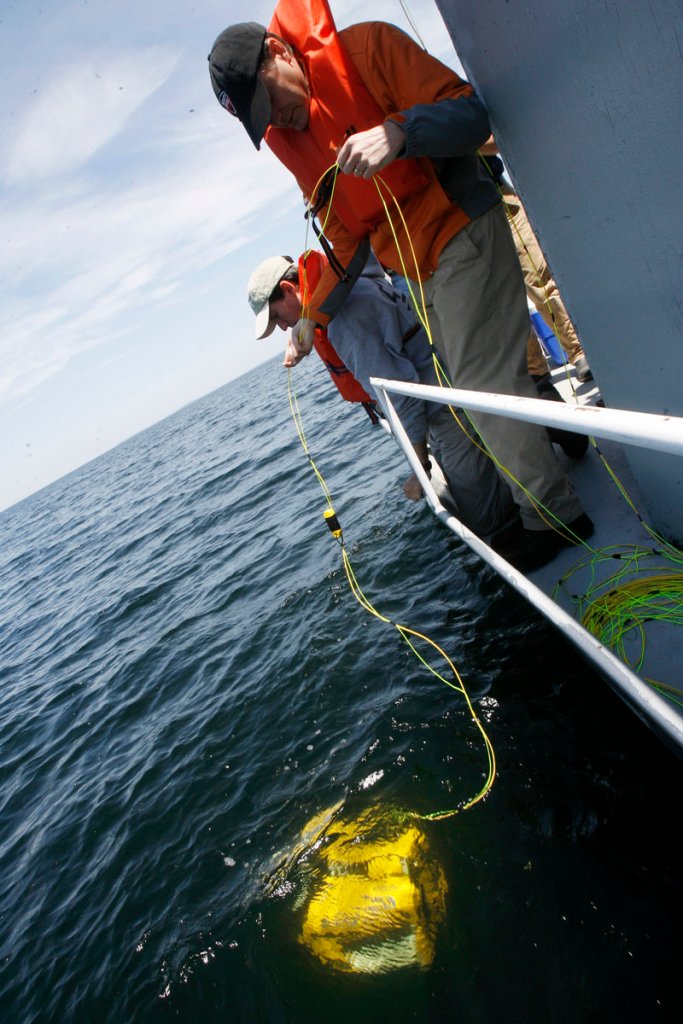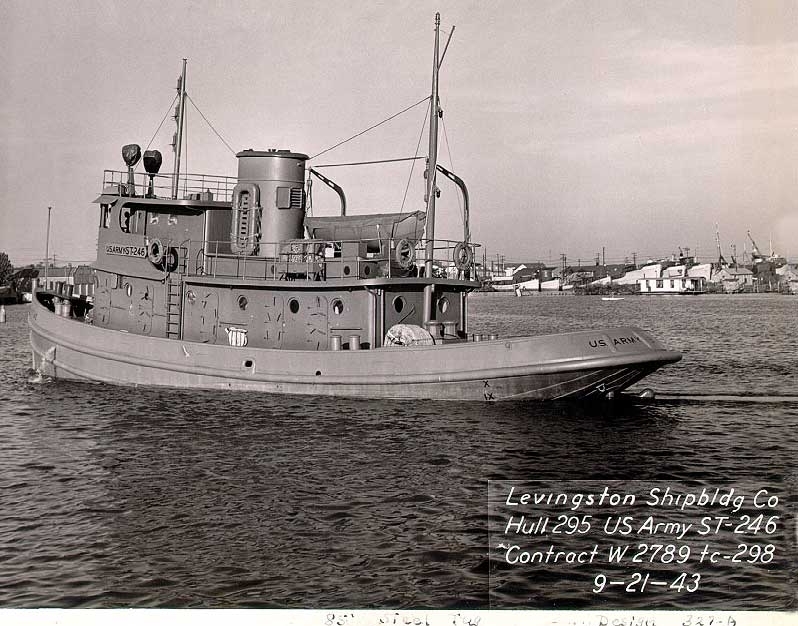ON LAKE CHAMPLAIN – For almost 50 years, a tugboat that once hauled barges between Vermont and New York on Lake Champlain has sat upright 160 feet underwater, hardly changed since the November night in 1963 when it ran aground on a reef and went down.
The paint on the William H. McAllister appears barely faded in recent video footage, and fire hoses remain coiled on the deckhouse walls. There’s also a chance that the tug’s fuel tanks still could be holding as much as 14,000 gallons of diesel fuel.
That has federal officials, environmentalists and residents who know about it concerned.
The threat of what could happen if those tanks were to fail and belch fuel into the 120-mile-long lake that separates Vermont and upstate New York drew an expedition last week of federal environmental officials and engineers to the lake. They sent a remotely operated vehicle onto the McAllister to try to determine if there’s fuel that could leak out.
“It’s in such good condition after all these years,” said Don Dryden, a commercial diver who was there to provide technical expertise about the condition of the tugboat for McAllister Towing and Transportation of New York, the successor to the company that owned the tug in 1963.
The Environmental Protection Agency will analyze last week’s findings and perhaps send divers into the tug this summer to determine how much fuel is in the tanks. If necessary, the remaining fuel would be pumped out, said Paul Kahn, a coordinator for the EPA.
Dryden isn’t convinced there’s still fuel in the tanks. “Oil being lighter than water, in all probability this thing was empty 30 or 40 years ago,” he said.
Concern grew in 1997 after an oil sheen was discovered on the water above the McAllister.
There are numerous scenarios with bad outcomes, said Art Cohn, who heads the Lake Champlain Maritime Museum, which was hired to conduct the latest inquiry. An experienced scuba diver could unscrew a fuel tank cap and unwittingly cause a catastrophic release of fuel, he said. Other unforeseen events or natural deterioration also could cause the tanks to fail, he said.
The McAllister is a reminder of a time when Lake Champlain was a vital commercial waterway that for more than 150 years moved cargo to and from upstate New York and Vermont through canals and systems of locks. The McAllister is believed to be the last significant commercial vessel to sink on the lake.
The focus on the McAllister began before the Gulf of Mexico oil spill that followed an April 20 explosion and fire on a drilling rig. But the comparison between possible threats posed by the McAllister and what is happening in the Gulf is on the minds of people looking at the sunken tug.
If in a worst-case scenario, 14,000 gallons of diesel fuel were to be released all at once, it would cause the same problems and concerns as the Gulf oil spill, said Mary Watzin, a University of Vermont professor who has studied the lake for 20 years.
“There would clearly be impacts for fish and wildlife that use the lake,” Watzin said. “We would have the same kind of oiling problems with water birds that we’ve seen in the Gulf.”
There are similarities between the McAllister and a cargo ship that sank 80 miles west of Lake Champlain more than three decades ago.
In 1974, a freighter carrying iron ore ran aground in more than 200 feet of water off Massena, N.Y. People reported seeing an oil sheen on the water in 2003. The next year, the Coast Guard oversaw the successful removal of about 6,000 gallons of fuel oil from the ship.
“We do take these things very seriously,” said Lt. Cmdr. Carl Kepper, supervisor of the Coast Guard’s marine safety unit in Massena.
The wreckage of the McAllister was first discovered in 1988. Nine years later, experts recognized the threat of leaking fuel. But the EPA determined that the McAllister’s tanks probably contained less than 1,000 gallons of diesel fuel when it went down, and that it had long since leaked out.
When the McAllister struck Schuyler Reef on Nov. 17, 1963, its eight-man crew scampered to safety on the barge it was hauling. No local newspaper accounts could be found mentioning large amounts of fuel washing ashore. At the time, the McAllister company considered raising the $250,000 vessel, but nothing came of the plan.
“Had the diesel fuel leaked out, there should have been an adverse impact, which would have been reported in the news,” Kahn said.
The EPA is using money from a Coast Guard fund to pay for the investigation into whether the McAllister poses a threat, Kahn said. It paid the Maritime Museum $75,000 for last week’s assessment. If the tanks need to be pumped out, McAllister Towing would be responsible for the cost, Kahn said.
McAllister Vice President Bucky McAllister said ownership of the tug isn’t clear-cut; the current company wasn’t created until six years after the tug sank.
“We are certainly approaching this with an effort to be good corporate citizens,” McAllister said. “Right now we’re not sure who owns the William McAllister. We have searched our own records and have not been able to find them. We are searching insurance records right now to get more facts.”
Send questions/comments to the editors.




Success. Please wait for the page to reload. If the page does not reload within 5 seconds, please refresh the page.
Enter your email and password to access comments.
Hi, to comment on stories you must . This profile is in addition to your subscription and website login.
Already have a commenting profile? .
Invalid username/password.
Please check your email to confirm and complete your registration.
Only subscribers are eligible to post comments. Please subscribe or login first for digital access. Here’s why.
Use the form below to reset your password. When you've submitted your account email, we will send an email with a reset code.